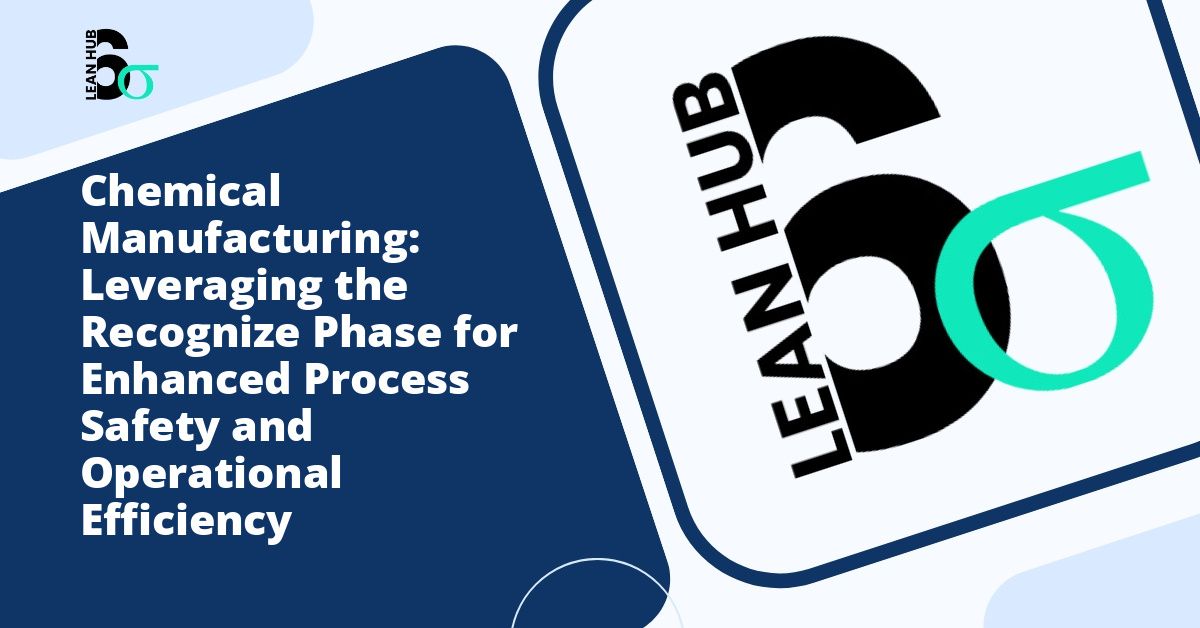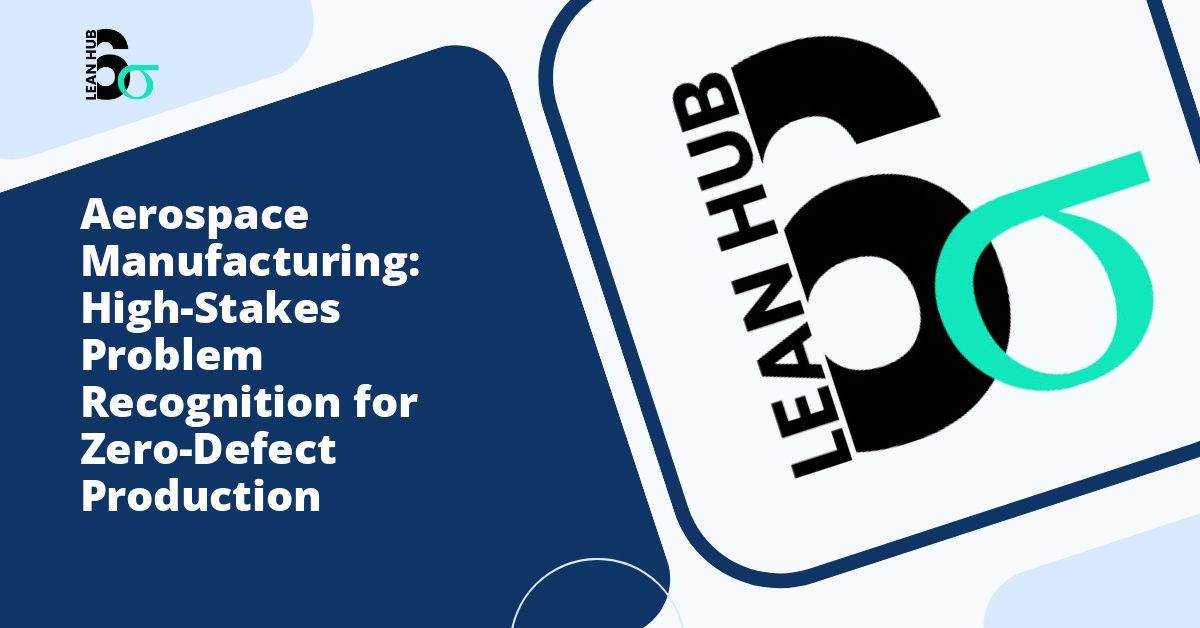The Lean Six Sigma methodology has become an essential framework for organizations seeking to improve quality, reduce waste, and enhance operational efficiency. While many practitioners focus heavily on the Define, Measure, Analyze, Improve, and Control (DMAIC) phases, there is a critical preliminary step that often receives insufficient attention: the Recognize phase. This initial stage sets the foundation for successful process improvement initiatives, yet it is fraught with potential pitfalls that can derail even the most well-intentioned projects.
Understanding how to navigate the recognize phase effectively can mean the difference between a transformative improvement initiative and a costly misstep. This comprehensive guide explores the common pitfalls encountered during this crucial stage and provides actionable strategies to avoid them. You might also enjoy reading about Combining Design Thinking with the Recognize Phase for Innovation Success.
Understanding the Lean Six Sigma Recognize Phase
Before diving into the pitfalls, it is essential to understand what the recognize phase entails. This preliminary stage involves identifying opportunities for improvement, assessing the organizational readiness for change, and determining which processes would benefit most from Lean Six Sigma intervention. The recognize phase serves as the gateway to all subsequent improvement activities, making it critical to get this step right. You might also enjoy reading about How to Get Buy-In for Your Six Sigma Project During the Recognize Phase.
During this phase, organizations must evaluate their current state, identify pain points, and prioritize potential projects based on strategic alignment, resource availability, and expected impact. When executed properly, the recognize phase creates momentum and sets clear expectations for what lies ahead. You might also enjoy reading about Recognizing Process Inefficiencies in Banking Operations: A Lean Six Sigma Approach.
Common Pitfalls in the Recognize Phase
1. Failing to Align Projects with Strategic Objectives
One of the most frequent mistakes organizations make is selecting improvement projects that lack alignment with overarching business goals. Teams may become enthusiastic about solving problems that, while legitimate, do not contribute meaningfully to strategic priorities. This misalignment leads to wasted resources and missed opportunities for impactful change.
To avoid this pitfall, establish clear criteria for project selection that explicitly tie each initiative to strategic objectives. Engage leadership early in the process to ensure that proposed projects support the organization’s vision and goals. Create a scoring matrix that weighs strategic alignment heavily when evaluating potential projects.
2. Overlooking Stakeholder Engagement
Another critical error during the recognize phase is failing to engage relevant stakeholders from the outset. Process improvement initiatives affect multiple parties, including employees, managers, customers, and suppliers. When these groups are not consulted early, organizations risk encountering resistance, missing vital information, and ultimately implementing solutions that do not address real needs.
Successful stakeholder engagement requires identifying all parties affected by the proposed improvement and soliciting their input during the recognition process. Conduct interviews, focus groups, and surveys to gather diverse perspectives. This inclusive approach not only enriches your understanding of the problem but also builds buy-in for future changes.
3. Selecting Projects That Are Too Broad or Too Narrow
Scope definition presents a significant challenge during the lean six sigma recognize phase. Projects that are too broad become unmanageable, leading to scope creep, extended timelines, and team burnout. Conversely, projects that are too narrow may not deliver sufficient value to justify the investment of time and resources.
To strike the right balance, apply the Goldilocks principle to project scoping. Ensure that each project can be completed within a reasonable timeframe, typically three to six months. Define clear boundaries that are neither so expansive that they become overwhelming nor so limited that they produce marginal benefits. Consider breaking large opportunities into multiple smaller projects that can be tackled sequentially.
4. Insufficient Data and Evidence
Decisions made during the recognize phase should be data-driven, yet many organizations rely too heavily on anecdotal evidence or gut feelings. While intuition has its place, basing project selection solely on assumptions can lead to misallocated resources and disappointing results.
Before committing to a project, gather preliminary data that demonstrates both the existence and magnitude of the problem. This might include basic process metrics, customer complaint data, financial information, or quality indicators. While comprehensive data collection occurs in later phases, having sufficient evidence during recognition ensures that you are addressing genuine issues rather than perceived ones.
5. Ignoring Resource Constraints
Enthusiasm for improvement can sometimes cloud judgment regarding available resources. Organizations frequently recognize multiple worthy projects but fail to realistically assess whether they have adequate personnel, time, budget, and expertise to pursue them simultaneously.
Conduct a thorough resource assessment before finalizing project selections. Consider not only the availability of team members but also their current workload, required skill sets, and the duration of their commitment. Be realistic about how many projects can be undertaken concurrently without compromising quality or exhausting your team.
6. Neglecting Quick Wins
While it may be tempting to tackle the most complex and challenging problems first, this approach can lead to extended periods without visible results. Teams may become discouraged, and leadership support may wane when improvements take too long to materialize.
Balance your project portfolio by including some quick wins alongside more substantial initiatives. These shorter-term projects generate early successes that build confidence, demonstrate the value of lean six sigma, and maintain momentum. Quick wins also provide learning opportunities for teams new to the methodology without overwhelming them with complexity.
7. Poor Documentation During Recognition
The recognize phase generates important information about why specific projects were selected, what alternatives were considered, and what criteria guided decision-making. Unfortunately, many organizations fail to document these details adequately, leading to confusion later when team members or stakeholders question project rationale.
Establish a standard template for documenting the recognize phase that captures key information such as problem statements, strategic alignment, preliminary metrics, stakeholder input, and selection criteria. This documentation serves as a reference point throughout the project lifecycle and helps justify decisions when questions arise.
Best Practices for a Successful Recognize Phase
Create a Structured Evaluation Process
Develop a formal process for identifying and evaluating potential improvement opportunities. This might include regular review meetings, a centralized system for submitting ideas, and standardized assessment tools. A structured approach ensures consistency and prevents worthy projects from being overlooked.
Establish Clear Selection Criteria
Define specific criteria for project selection that reflect organizational priorities. Common criteria include strategic alignment, expected financial impact, customer benefit, feasibility, and resource requirements. Weight these criteria according to their importance and use them consistently when evaluating all potential projects.
Foster a Culture of Continuous Improvement
The recognize phase should not be a one-time event but rather an ongoing activity embedded in organizational culture. Encourage employees at all levels to identify improvement opportunities and provide mechanisms for them to submit ideas. Recognize and reward those who contribute valuable insights.
Leverage Cross-Functional Perspectives
Form diverse teams to evaluate potential projects. Cross-functional groups bring varied perspectives that help identify hidden impacts and interconnections between processes. This diversity strengthens decision-making and increases the likelihood of selecting projects with broad organizational benefit.
Conclusion
The recognize phase of lean six sigma serves as the foundation for all subsequent improvement activities. By understanding and avoiding common pitfalls such as misalignment with strategy, inadequate stakeholder engagement, poor scoping, insufficient data, resource constraints, neglecting quick wins, and poor documentation, organizations position themselves for success.
Investing time and attention in the recognize phase pays dividends throughout the project lifecycle. A well-recognized project begins with clear purpose, adequate resources, stakeholder support, and realistic expectations. These elements dramatically increase the likelihood of achieving meaningful, sustainable improvements that advance organizational objectives.
As you embark on your lean six sigma journey, remember that recognition is not merely about identifying problems but about strategically selecting the right opportunities that will deliver maximum value. By applying the insights shared in this guide, you can navigate the recognize phase with confidence and set your improvement initiatives on the path to success.








